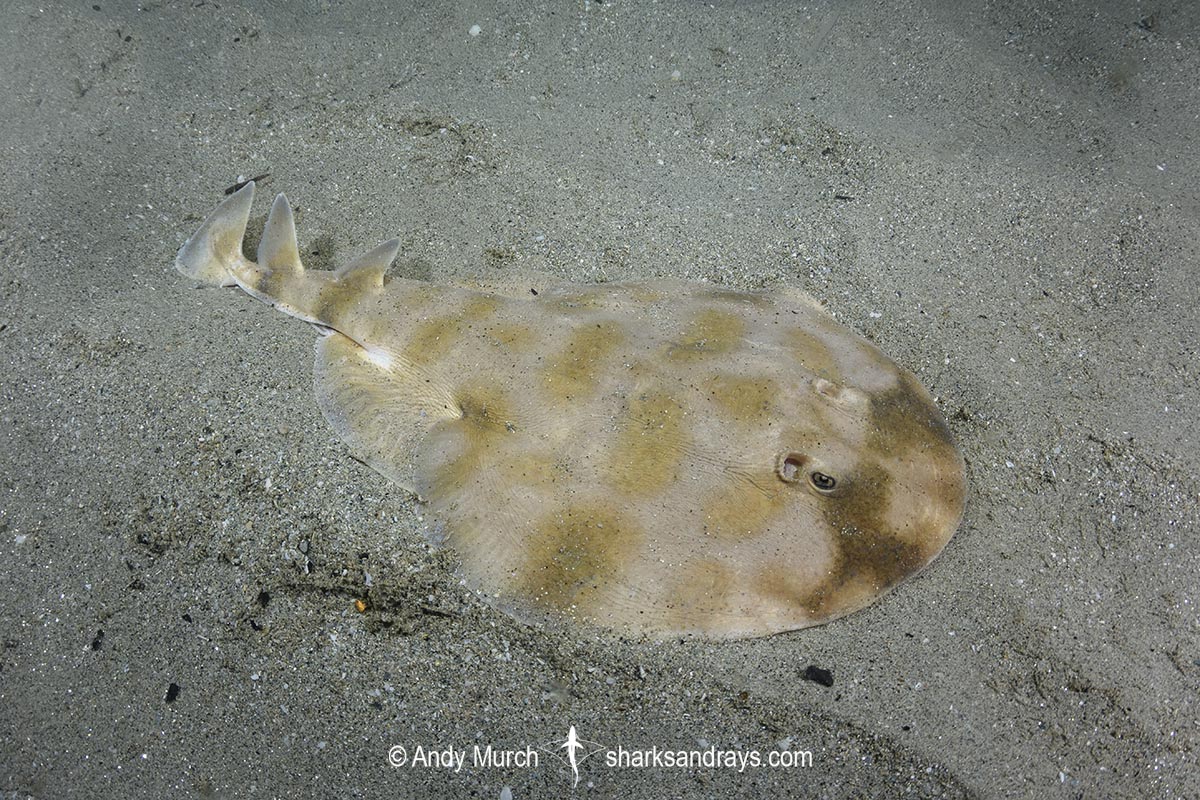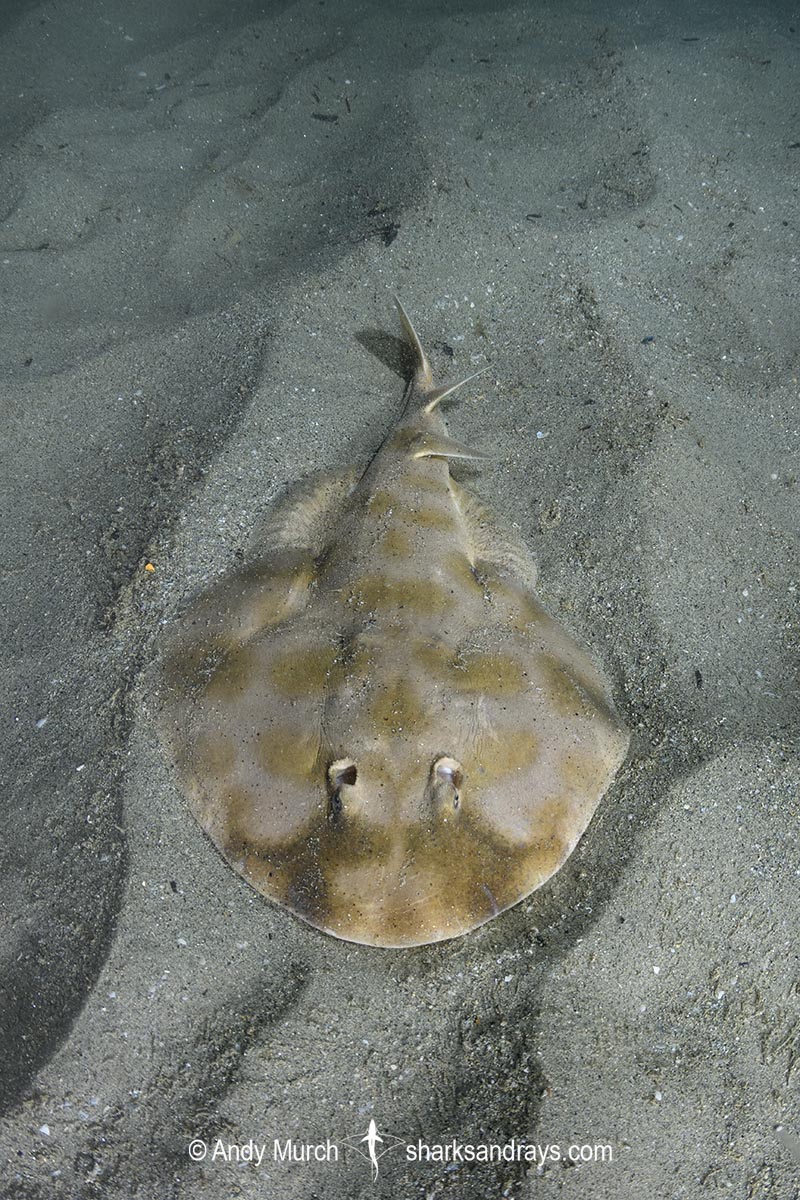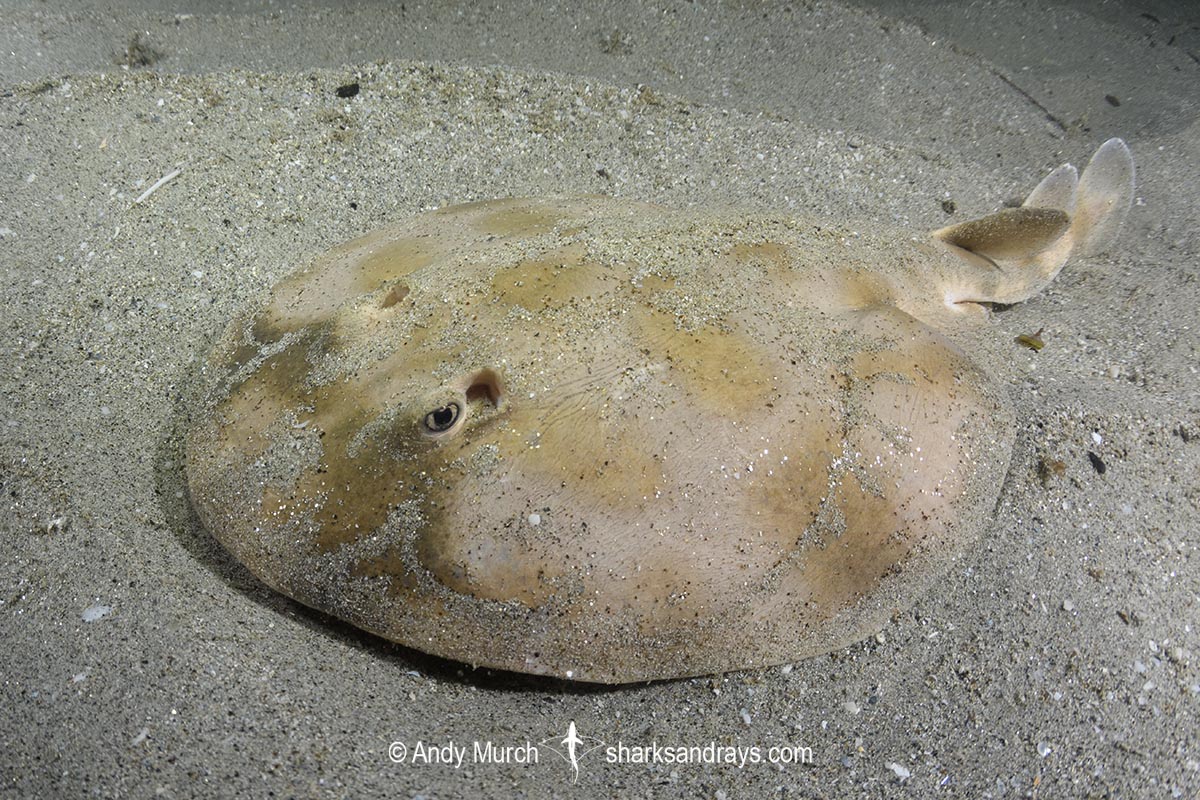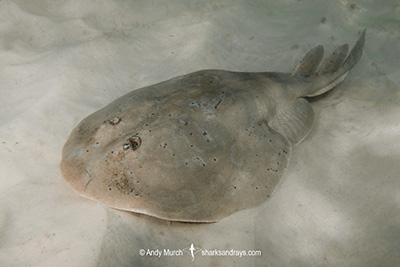Common names
Brazilian Electric Ray, Lesser Numbfish.
Binomial
Narcine brasiliensis.
Synonyms
Narcine brachypleura, Torpedo brasiliensis, Torpedo ocellata.
Identification
A large electric ray with a teardrop-shaped body and a broadly rounded snout. Disc width equal to or slightly wider than long. Anterior disc margins and pectoral fin apices broadly rounded. Eyes large and protruding, equal in size to spiracles. Spiracles sub-circular with raised margins containing small papillae. Nasal curtain short and wide, posterior margin straight.
Pelvic fins broad, fan-like, with rounded margins. Tail broad based, with a pronounced lateral keel. Inter-dorsal fin space appoximately equal to dorsal base length. Dorsal fins large and high. First dorsal with a broadly rounded apex. Second dorsal angled backwards, with an more tightly rounded apex. First dorsal origin over pelvic fin insertion. Caudal fin sub-triangular with a convex posterior margin. Claspers in larger males extend well beyond posterior margin of pelvic fins.
Colour
Dorsum light to mid brown or greyish brown, usually with large darker brown blotches arranged symmetrically forming broken bars across disc. Snout entirely very dark or with a dark cross bar anterior to eyes. Dorsal markings sometimes indistinct. Lateral keel and posterior margins of fins pale. Ventrum creamy white, often with dusky posterior margins on pectoral and pelvic fins.
Size
Maximum length ~45cm. Size at birth ~11cm.

Conservation Status
NEAR THREATENED
The Brazilian Electric Ray is caught in poorly managed commercial and artisanal beach seine and trawl fisheries. Although discarded, it often sustains injuries during capture, leading to a potentially high post-release mortality.
Although the fishing pressure is high throughout its range causing declines, the Brazilian electric ray remains relatively common. It is estimated to have declined by 20-29% in the last three decades.

Habitat
Tropical to sub-temperate seas. Benthic on soft substrates. From 2-60m. Minimum depth record of 2m, personal observation during a night dive in Buzios, Brazil.
Distribution
Southwestern Atlantic. From the Amazon in northern Brazil to Buenos Aires in Argentina.
Reproduction
Viviparous. Average litter size 4.
Diet
Feeds mostly on benthic invertebrates.
Behavior
Moves inshore to feed at night.
Reaction to divers
At night, the Brazilian Electric Ray is extremely tolerant of divers; remaining motionless even when uncovered by fanning sand the away.
Diving logistics
Fairly common at dive sites in central Brazil. I found two of these on a very shallow shore dive at Praia João Fernandes in Buzios.
The Abrolhos Archipelago also seems to be a good spot to encounter Brazilian electric rays.
What’s new
View our full list of updates
Similar species
Lesser Electric Ray A varied species that is sometimes difficult to distinguish phisically, but geographically separated by the Amazon outflow.




